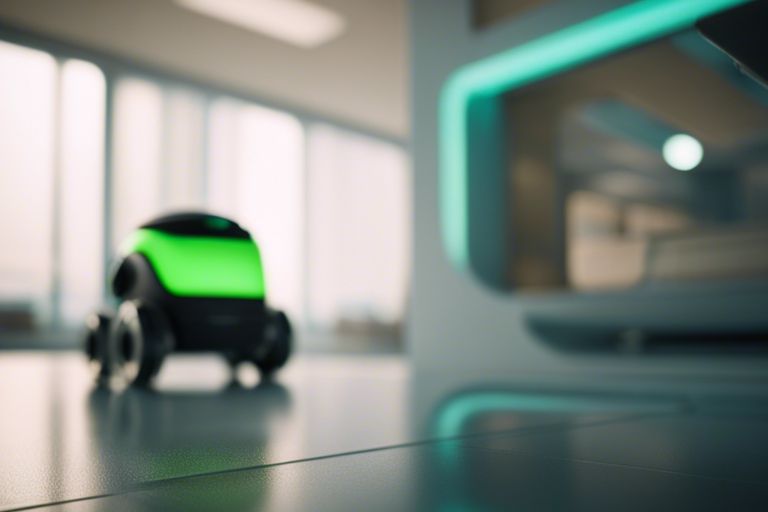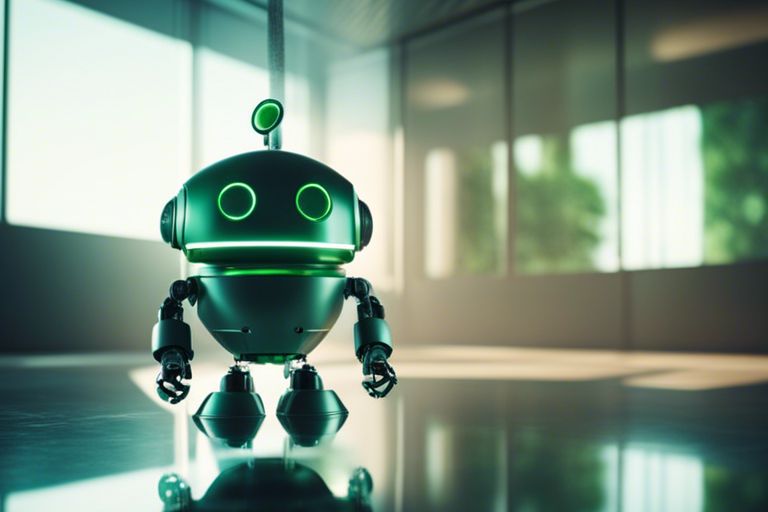It’s fascinating how artificial intelligence is revolutionizing the green cleaning industry, merging cutting-edge technology with sustainable practices. AI is playing a pivotal role in enhancing the efficiency and effectiveness of environmentally friendly cleaning processes, offering innovative solutions to the age-old challenge of balancing cleanliness with sustainability. As we investigate deeper into the intersection of AI and green cleaning technologies, it becomes evident that these advancements are not only beneficial for the environment but also for businesses looking to streamline their operations and reduce their ecological footprint.
Key Takeaways:
- Efficiency: AI can optimize cleaning processes, reducing waste and energy usage.
- Precision: AI can target specific areas for cleaning, leading to more effective and environmentally friendly methods.
- Data Analysis: AI can analyze data to improve cleaning schedules and product usage, cutting down on unnecessary cleaning.
- Sustainability: AI can help in developing eco-friendly cleaning products and methods.
- Remote Monitoring: AI enables remote monitoring of cleaning operations, enhancing efficiency and reducing travel-related carbon footprint.
- Cost Savings: AI can help in predicting maintenance needs, preventing breakdowns, and saving resources.
- Continuous Improvement: AI can learn from cleaning processes and adapt to make them more green and effective over time.
AI in Green Cleaning Product Development
Optimization of Eco-friendly Ingredients
Even in green cleaning product development, AI plays a crucial role. Cleaning companies are leveraging artificial intelligence to optimize the use of eco-friendly ingredients in their formulations. By employing AI algorithms, manufacturers can identify the most effective combination of natural elements to ensure the highest cleaning performance while minimizing environmental impact.
Predictive Analysis in Product Performance
With the integration of predictive analysis in green cleaning product development, companies can anticipate the performance of their formulations with greater accuracy. AI algorithms analyze data on various factors such as ingredient compatibility, surface interactions, and environmental conditions to predict how well a product will perform in real-world scenarios. This insight enables manufacturers to fine-tune their formulations for optimal efficacy and sustainability.
Performance.
By harnessing the power of AI in green cleaning product development, manufacturers can create innovative formulations that not only meet stringent environmental regulations but also deliver superior cleaning performance. AI-driven predictive analysis helps companies stay ahead of the competition by continuously improving product efficacy and sustainability, paving the way for a greener and cleaner future.

The Role of AI in Green Cleaning Operations
The role of artificial intelligence in green technology is increasingly prominent in the field of cleaning operations. AI is revolutionizing the way cleaning processes are carried out, making them more efficient, eco-friendly, and sustainable.
Smart Cleaning Devices and Robotics
Smart cleaning devices and robotics are at the forefront of AI in green cleaning operations. These devices are equipped with sensors and AI algorithms that enable them to navigate spaces intelligently, identify areas that need cleaning, and use resources efficiently. By automating cleaning tasks, they reduce the consumption of water, energy, and cleaning products, leading to significant environmental benefits.
Resource Management and Waste Reduction
Resource management and waste reduction are crucial aspects of green cleaning, and AI plays a key role in optimizing these processes. AI can analyze data on cleaning patterns, foot traffic, and environmental conditions to create efficient cleaning schedules. By employing predictive maintenance and real-time monitoring, AI helps in preventing equipment breakdowns, reducing resource wastage, and minimizing the environmental impact of cleaning operations.
Plus, AI enables smart sorting and recycling processes, leading to a more circular economy approach in waste management within cleaning operations. By identifying recyclable materials and sorting them efficiently, AI contributes to reducing the amount of waste that ends up in landfills, thereby promoting a more sustainable approach to cleaning practices.

AI and the Human Element
Not only is AI playing a crucial role in driving green cleaning technologies, but it is also significantly impacting the human element in this sector. According to How AI can help us clean up our land, air, and water, AI is revolutionizing how humans interact with cleaning technologies and is enhancing the overall efficiency and effectiveness of green cleaning practices.
Training and Support for Green Cleaning Practices
To ensure successful implementation and adoption of green cleaning practices, training and support are important. By leveraging AI, training programs can be personalized to cater to individual needs and learning styles, boosting understanding and compliance with environmentally friendly cleaning protocols.
Enhancing Safety and Ergonomics
On top of improving cleaning efficiency, AI is also enhancing safety and ergonomics in the cleaning industry. By automating repetitive tasks and identifying potential hazards, AI-enabled systems help reduce the risk of injuries and promote a healthier working environment for cleaning staff.

Monitoring and Improvement
Real-time Data Analysis for Continuous Improvement
Continuous monitoring of cleaning operations through AI technology allows for real-time data analysis, enabling companies to identify inefficiencies and areas for improvement promptly. By collecting and analyzing data on cleaning processes, equipment usage, and resource consumption, organizations can optimize their operations for maximum efficiency and effectiveness.
Environmental Impact Assessment and Reporting
Impact on the environment is a critical consideration in green cleaning technology. AI plays a significant role in tracking and assessing the environmental impact of cleaning activities. Through the use of AI algorithms, companies can measure their carbon footprint, energy consumption, water usage, and waste generation. This data is vital for reporting compliance with sustainability standards and identifying opportunities for reducing environmental impact.
Improvement in green cleaning technologies is an ongoing process that requires collaboration between AI developers, cleaning companies, and environmental experts. By leveraging AI for monitoring and assessment, organizations can implement targeted strategies to reduce their ecological footprint while maintaining high cleanliness standards. Continuous improvement in green cleaning technologies not only benefits the environment but also contributes to long-term cost savings and improved brand reputation.
Future of AI in Green Cleaning
Your From Buzz to Impact: AI’s Role in Accelerating the Clean Economy blog post has shed light on the pivotal role of AI in advancing green cleaning technologies. As we probe deeper into the future of AI in green cleaning, we can expect cutting-edge innovations that will revolutionize the industry.
Cutting-edge Innovations on the Horizon
Cleaning technologies powered by AI are at the forefront of innovation, paving the way for more efficient and sustainable practices. From autonomous cleaning robots to machine learning algorithms that optimize cleaning schedules, the future holds endless possibilities for environmentally friendly solutions.
Scaling Green Cleaning Solutions Globally
Globally, the demand for green cleaning solutions is on the rise, driven by a growing awareness of the importance of sustainability. With the help of AI, companies can scale their green cleaning operations to meet this increasing demand while maintaining high standards of cleanliness and efficiency.
Scaling green cleaning solutions globally involves not only implementing AI-driven technologies but also collaborating with stakeholders across industries to drive systemic change towards a cleaner and more sustainable future.
Summing up
Ultimately, artificial intelligence plays a crucial role in advancing green cleaning technologies by enhancing efficiency, reducing waste, and creating innovative solutions for sustainable cleaning practices. With AI-driven systems improving data analysis, predictive maintenance, and autonomous cleaning processes, the future of environmentally friendly cleaning is brighter than ever. By integrating AI into green cleaning technologies, we can strive towards a cleaner and healthier planet for future generations.
FAQ
Q: What is the role of AI in green cleaning technologies?
A: AI plays a crucial role in green cleaning technologies by optimizing cleaning processes, predicting maintenance needs, and reducing energy consumption.
Q: How does AI optimize cleaning processes in green technologies?
A: AI utilizes sensors and data analytics to create efficient cleaning schedules, improve resource allocation, and reduce waste in green cleaning technologies.
Q: Can AI help in reducing the environmental impact of cleaning operations?
A: Yes, AI can help by minimizing water and energy consumption, using eco-friendly cleaning products, and reducing carbon emissions in green cleaning technologies.
Q: What are the benefits of using AI in green cleaning technologies?
A: The benefits include cost savings, improved cleaning efficiency, reduced environmental footprint, and enhanced workplace safety through predictive maintenance.
Q: How does AI contribute to predictive maintenance in green cleaning technologies?
A: AI analyzes data from sensors to predict equipment failures, schedule maintenance tasks proactively, and prevent costly breakdowns in green cleaning technologies.
Q: Can AI help in real-time monitoring of cleaning operations for better decision-making?
A: Yes, AI enables real-time monitoring of key performance indicators, alerts staff to deviations from standards, and provides insights for continuous improvement in green cleaning technologies.
Q: How can organizations integrate AI into their green cleaning practices?
A: Organizations can integrate AI by investing in smart cleaning equipment, training staff on AI tools, monitoring performance metrics, and continuously optimizing cleaning processes in alignment with green goals.